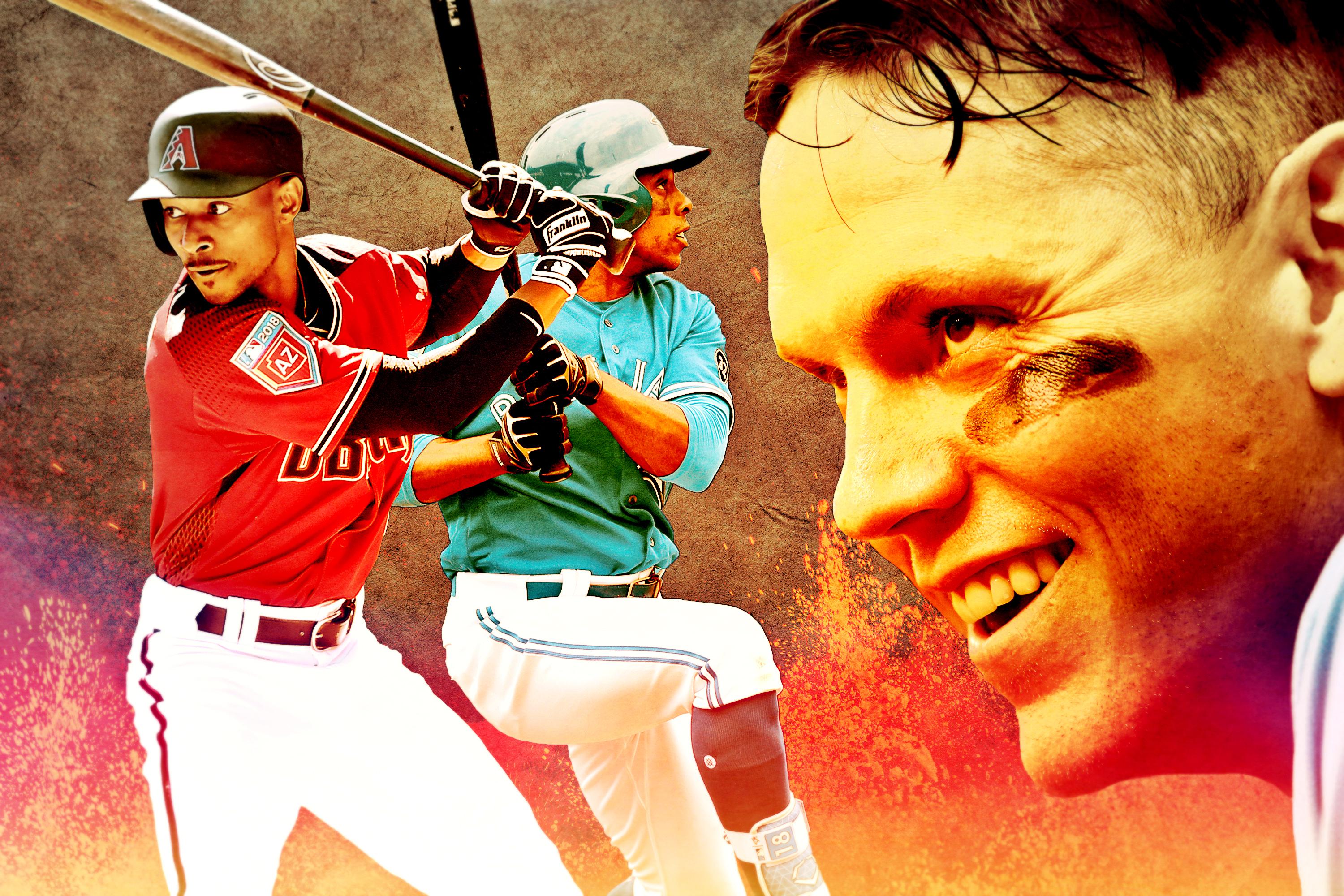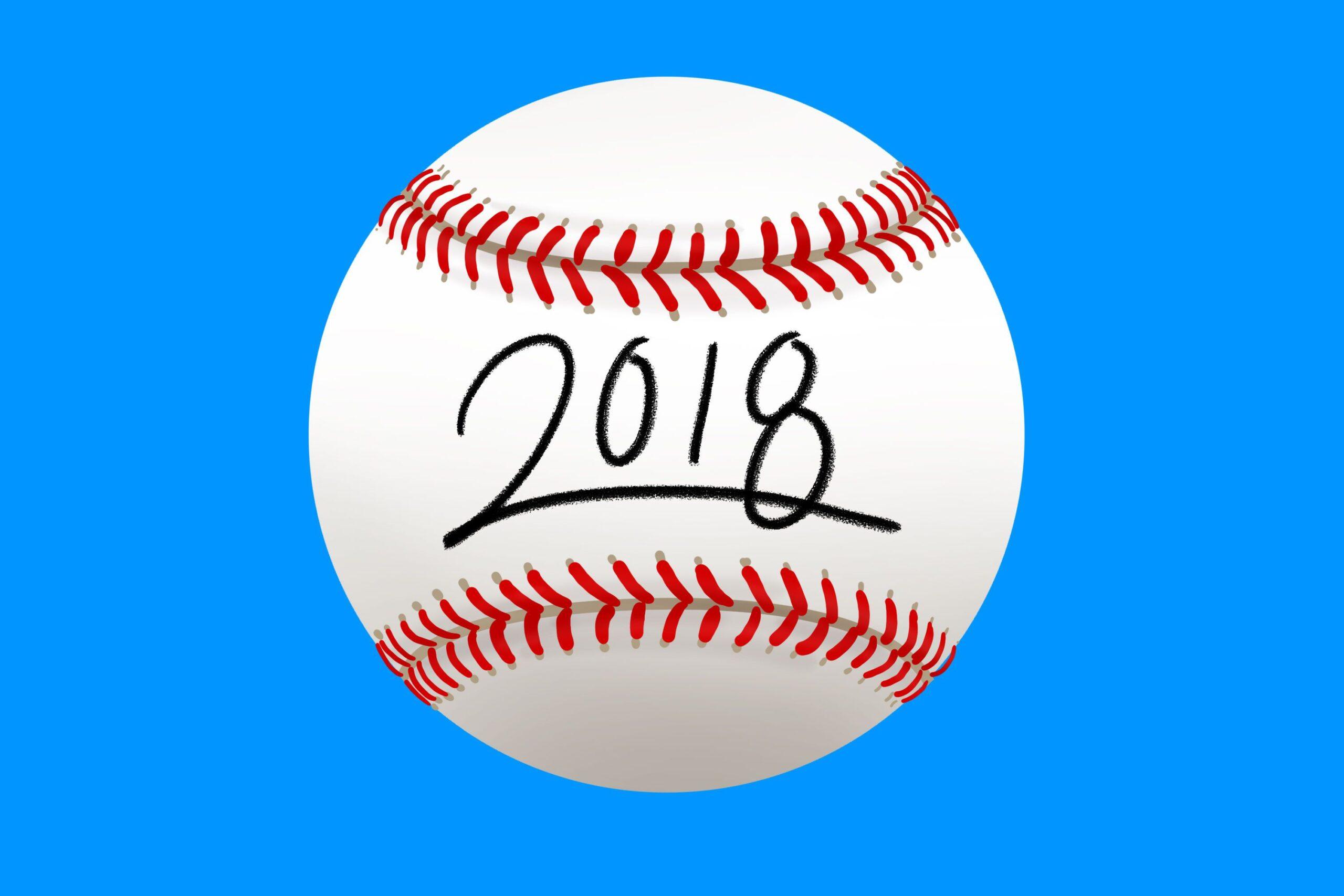
The Mets probably didn’t expect much from Bartolo Colón when they re-signed him before the 2016 season. He was 42 at the time and coming off a season in which he posted a below-average ERA and led the National League in hits allowed; he rated well behind the best free-agent pitchers, signing for just one year and $7.25 million. Thirty-five pitchers received more guaranteed money that winter, but the Mets weren’t going to spend $217 million on David Price, or even, say, $32 million on John Lackey. They settled for the cheaper Colón—and benefited greatly.
Colón turned in his best season in three years, and his second-best in 11, in 2016, posting a 3.43 ERA in 191 2/3 innings, making the All-Star team, and even hitting a home run at Petco Park in May. He led a Mets staff with Noah Syndergaard, Jacob deGrom, Matt Harvey, and Steven Matz in innings pitched and ranked third in WAR, supplying New York with 3.1 wins above replacement level, which proved vital when the Mets qualified for a wild-card spot by a single game.
Colón wasn’t alone as a cheap difference-maker that season, either, as Cleveland signed Rajai Davis and purchased the rights to the most shocking home run in recent memory—and, by change in championship odds, the fourth-most important play in World Series history—for the bargain price of $5.25 million. The next winter, Colorado signed Greg Holland for just $7 million and found the 2017 co-NL saves leader, who helped the Rockies reach the postseason for the first time since 2009. All three players signed for less than eight figures, and all three well exceeded their contracted value with their contributions to a playoff roster.
Who are the best Colón candidates from the 2017-18 offseason? It’s counterintuitive, but an offseason that supplied a number of suppressed free-agent contracts makes it harder to choose the absolute best bargain signings. Outside the upper crust of free agents, the middle and lower tiers found an aberrantly cold market, so there are many more candidates than usual who seem like they could outperform their contracts, even above Colón’s $7.25 million pay grade. Zack Cozart, who became the Angels’ third baseman after signing a three-year, $38 million deal, will prove a bargain if he maintains his 2017 level, for instance, and new Met Todd Frazier (two years, $17 million) almost certainly will be even if he declines.
But in the spirit of identifying the top potential bargains, it makes sense to limit the parameters somewhat, lest the whole list be a copy-pasted version of a free agent tracker. The 2018 Bartolo Colón All-Stars list, then, will feature only players whose contracts guarantee them less than eight figures, and who could mean the difference—as Cólon was in 2016—between a playoff spot or not, or between a division title and a wild-card berth. (Sorry, Mike Moustakas, but even after adding you at a bargain deal, the Royals aren’t going to contend.)
It’s possible that none of these free agents make the All-Star team as Colón and Holland did or that any of them hit a game-tying home run off the sport’s most intimidating pitcher in the eighth inning of Game 7 of a drought-ending World Series—that’d be fun, though!—as Davis did, but they can help their teams without that. They’re all bargain signings; they can aim lower and their teams can still reap the fruits of their success.
10th (all tied). A Glut of Relievers
Matt Albers, Brewers (Two years, $5 million)
Boone Logan, Brewers (One year, $2.5 million, plus 2019 option)
Tim Lincecum, Rangers (One year, $1 million)
Bud Norris, Cardinals (One year, $3 million)
Fernando Rodney, Twins (One year, $4.5 million, plus 2019 option)
At least one of these relievers will be great in 2018. Maybe two, or even three! They’ll get clutch outs and pick up enough saves to become intriguing fantasy options and gain the trust of their new manager. However, it’s hard to say which because of the volatility of relievers over the small samples in which they inherently pitch.
The most interesting aspect of relievers on this year’s best bargains list is that no bullpen arm appears any higher than 10th, as the relief market actually didn’t suffer much from this winter’s free-agent slowdown. Teams filled their bullpens early and paid to do it; as FanGraphs’ Travis Sawchik wrote earlier this month, eight “middle-class” free agents this winter signed a contract worth more than they were predicted to receive, and all eight were relievers. This disparate pattern has led to oddities like Tommy Hunter earning more than Logan Morrison, but such is the sport in 2018: Every team wants a Yankees-style super-pen.
9. Carlos Gómez, Rays (One year, $4 million)
If Tampa Bay is to make a real playoff run in 2018, it will involve proving that its offseason jettisoning of half the team’s name-brand players was less the precursor to a full rebuild and more a reshuffling in search of more roster depth. To wit: Steven Souza, whom Tampa Bay traded for two prospects, will make just $3.55 million in 2018, which is actually slightly less than his replacement in right field, Gómez, will be paid. Tampa Bay isn’t getting rid of all its financial commitments.
Gómez can help convince skeptics that the club’s moves were shrewd rather than cynically motivated after he collected a set of impressive numbers in just 105 games last season: 17 homers, 13 steals, and a 110 wRC+ to pair with passable center-field defense. His newly extreme strikeout tendency (29.9 percent K rate since 2016) limits his upside compared to Souza’s, but FanGraphs projects Souza for 1.5 wins above replacement in 2018 and Gómez for 1.4, so there’s a decent chance that Tampa Bay doesn’t end up regretting its swap in right field. As a 32-year-old who derives value from his speed and athleticism, Gómez isn’t a long-term solution in Tampa Bay, but the Rays only need him to play well for the duration of a one-year deal.
8. Howie Kendrick, Nationals (Two years, $7 million)
Since transitioning from a full-time second base position after the 2015 season, Kendrick has played at least 10 games at first base, second base, third base, and left field, plus an additional three games in right. Kendrick celebrates his 35th birthday in July but is still a capable, flexible backup in an age that prizes multi-positionality, and he wields an effective bat off the bench, too: He’s exceeded a 100 wRC+ in six of the past seven years and just last season slashed .315/.368/.475 across stints with Philadelphia and Washington.
With Daniel Murphy still recovering from offseason knee surgery, Adam Eaton still recovering from a torn ACL in April 2017, and the likes of Bryce Harper, Ryan Zimmerman, and Trea Turner posing persistent injury risks, Washington’s lineup should allow plenty of opportunity for its reserves to make an impact. If Kendrick comes anywhere close to his numbers from last year, he’ll play a key role in new manager Dave Martinez’s lineup card.
7. Doug Fister, Rangers (One year, $4 million, plus 2019 option)
Fister might seem an odd choice for this list, given that he’s posted a below-average ERA each season since 2014 and was released by the pitching-starved Angels last summer, but Fister pitched well enough for Boston in the second half to suggest that he could help Texas’s similarly pitching-starved roster in 2018. He spun a career-best strikeout rate last year (21.2 percent, in the neighborhood of Dallas Keuchel and Danny Duffy), his ground-ball rate was the highest since 2013, and his fastball averaged 89.7 miles per hour, which was his fastest since 2013, as well. As FanGraphs’ Jeff Sullivan noted, when Fister appeared in Boston’s rotation, he essentially mimicked his prior self from 2012-13, and Fister was a top-of-the-rotation arm for the Tigers in those seasons.
Overall, his below-average 2017 ERA (4.88) is a bit of a mirage, resulting from a disastrous string of luck with runners on base; his above-average FIP (3.98) is more representative of the skills he flashed on the mound. Texas is counting on rebounds from a number of veteran arms, from Fister to Matt Moore even to Colón, and for just $4 million, the Rangers are betting that Fister is closer to regaining his 2013 form in both process and results than his last few seasons of the latter might suggest.
6. Chris Iannetta, Rockies (Two years, $8.5 million, plus 2020 option)
Not many catchers combine an average bat with a solid defensive base, but the Rockies signed one in Iannetta after struggling to generate any offense from the position in 2017. The Rockies ranked 29th in catcher hitting last year and their backstops combined to produce a 61 wRC+; for comparison, Giants pitcher Ty Blach managed a 67, meaning the Rockies put two pitcher-quality bats at the bottom of their lineup last season, instead of the rules-prescribed one.
Iannetta’s no Gary Sánchez, but he doesn’t swing like a pitcher, either, and when he’s defending well, his value compounds quickly. By Baseball Prospectus’ WAR calculation (WARP), which includes catcher framing, Iannetta was as valuable last season as J.D. Martinez, who signed a free-agent contract with Boston worth 13 times as much as Iannetta’s new deal.
There are reasons for skepticism that Iannetta will be that valuable going forward: For one, that defensive conditional is an important qualifier, as his framing graded out highly last year but has zigzagged between great and terrible for years; for another, even the valuation systems that adored Iannetta last season think he will regress in 2018. But after Colorado made the playoffs with a seven-man offense last year, the bar for catcher contributions is so low that even mere competence will do the trick.
5. Alex Avila, Diamondbacks (Two years, $8.25 million)
Replacing Iannetta in Arizona’s catching rotation is Avila, who accessed a tremendous amount of power in his return to relevance in 2017. Based on how hard he hit the ball and at what angle, Avila was a top-10 hitter in the majors last year, sandwiched between Nelson Cruz and Rhys Hoskins and just ahead of a glut of superstars including Giancarlo Stanton, Carlos Correa, and Bryce Harper.
Avila’s contributions to Arizona’s quest to return to the playoffs will hinge on how manager Torey Lovullo chooses to deploy his new backstop, as Avila is the inverse of incumbent Diamondbacks catcher Jeff Mathis. Mathis is a defensive genius but one of the worst hitters in MLB history; Avila is a thumper in the batter’s box but ranked 97th out of 110 qualifying catchers in per-pitch framing last season. One could imagine that Zack Greinke would rather throw to Mathis, but see Avila’s bat supporting him in the lineup.
4. Jarrod Dyson, Diamondbacks (Two years, $7.5 million)
The second Diamondback on this list is Dyson, who was penciled into a starting job for all of one day after signing, until Arizona traded for Souza to fill the third outfield spot next to A.J. Pollock and David Peralta. Still, Dyson provides valuable services off the bench as an elite fielder, speedy base runner, and capable platoon bat (100 wRC+ against righties last year). Playing in the National League will afford Dyson the opportunity to maximize that skill set, which can be quite valuable even in abbreviated doses: Dyson’s 5.2 combined WAR through the past two seasons is greater than that of Souza, for instance, in two-thirds of the playing time.
Pollock and Peralta, moreover, have combined to appear in just 48 percent of all possible games during the past two seasons because of various ailments, so Dyson could end up as the strong half of a platoon, potentially with another stylistic opposite—the slugger and defensive problem Yasmany Tomás—in the event of an injury in the outfield.
3. Neil Walker, Yankees (One year, $4 million)
Besides his 40 plate appearances in his debut in 2009, Walker has been an above-average hitter with double-digit homers every year, and he’s been even better in recent seasons: Since 2014, he’s tied for fourth among second basemen in wRC+ with Brian Dozier, and is behind only José Altuve, Daniel Murphy, and Robinson Canó.
Walker is an average defender at best and a health risk, but he’s a flexible placeholder for an already-powerful Yankees lineup, where he might slot in as the most overqualified no. 9 hitter in the majors. He could start at second base on Opening Day and also serve as a backup for several positions, especially once Gleyber Torres, one of the top five prospects in baseball, earns a promotion from Triple-A. As a switch hitter with more power as a lefty, he is a perfect fit for Yankee Stadium as well. It’s not often that a contender finds a potential starter for cheap in March, but at least something finally broke the Yankees’ way.
2. Curtis Granderson, Blue Jays (One year, $5 million)
Even with an end-of-season slump after he was traded to the Dodgers tanking his 2017 batting line, Granderson was still an above-average hitter for the whole season. Over a full year, he’s never produced a wRC+ below 98, and the 37-year-old outfielder doesn’t seem ready to give up that streak in 2018. While spring training numbers aren’t gospel, Granderson has hit .333/.432/.933 this spring with four homers in 37 plate appearances and more walks than strikeouts, which at the very least suggests his Dodger stint didn’t ruin his bat for good.
Among Granderson, Randal Grichuk, Teoscar Hernández, and Steve Pearce—who ranked first on the “best bargains” list last offseason—Toronto has a group of decent corner outfielders who could be something more than that in 2018. Somewhat surprisingly, the Blue Jays lead the projected pack of candidates for the AL’s second wild card, with FanGraphs forecasting 85 wins for the ALCS losers in 2015 and 2016, and a supporting job from Granderson could help the team complete its return to the playoffs.
1. Logan Morrison, Twins (One year, $6.5 million, plus 2019 option)
Playing in Tampa Bay last season, Morrison embraced the air-ball revolution, boosting his hard-hit and fly-ball rates to career highs, which led to another career high—this one in homers, where his 38 well outstripped his previous best of 23. In a market with suppressed demand for power-first players, Morrison struggled to find a job until late February, but in Minnesota, he actually finds himself in a perfect situation for his services.
Twins designated hitters managed just a cumulative 88 wRC+ last season, meaning Minnesota filled a position whose sole role is to hit with a group that was 12 percent below average at hitting. Even in a second-half decline, Morrison was still 12 percent above league average by wRC+, and he finished much better than that (130 wRC+) through the whole 2017 season. Even regressing his 2018 outlook to match the second half makes Morrison a marked improvement over the Twins’ options last year, when they batted their DH ninth in the wild-card loss to the Yankees.
The most expensive free agent Minnesota signed this winter was reliever Addison Reed (two years and just $16.75 million), but the Twins made a bunch of small, savvy moves to better position themselves for this season, when they’ll benefit from playing a third of their schedule against the woeful Royals, Tigers, and White Sox. Reed is good, Rodney could be good, Lance Lynn for $12 million is a steal, Jake Odorizzi—whom the team acquired from Tampa Bay in exchange for a minor leaguer with only vague prospect acumen—is a high-upside rotation play, and Morrison will help anchor the lineup. Last year, the Twins ranked second in the majors in runs scored after the All-Star break, and they boast another sneakily potent offense heading into 2018.


